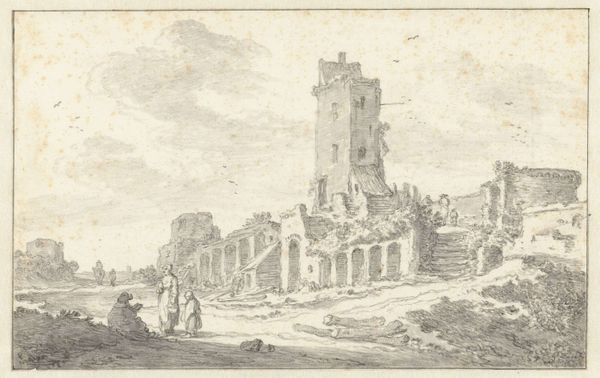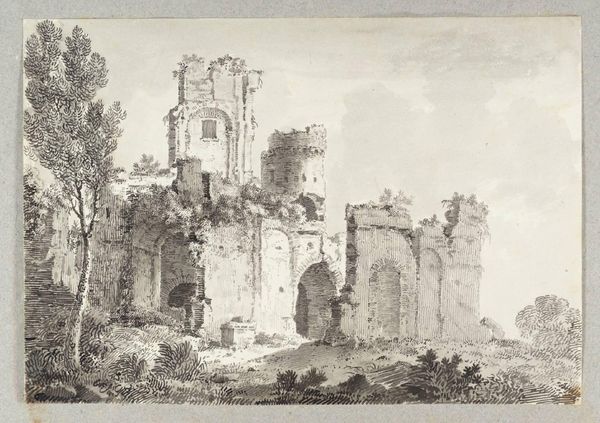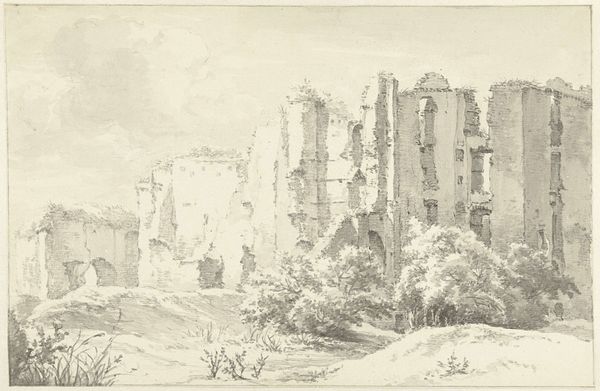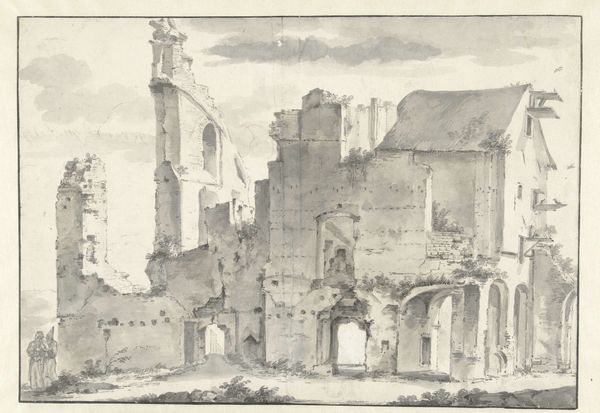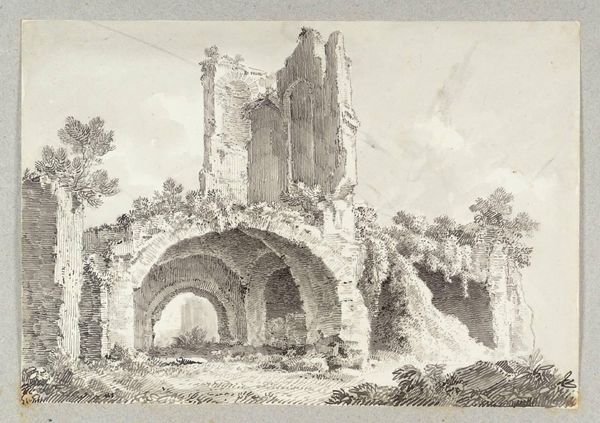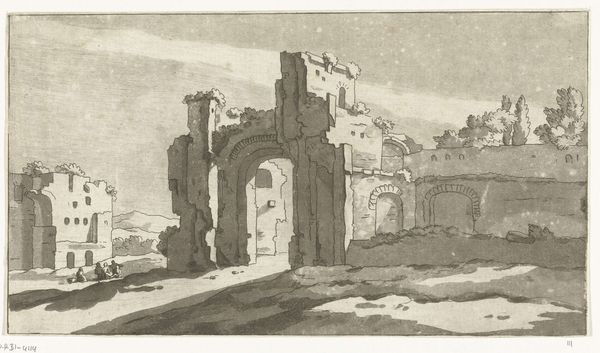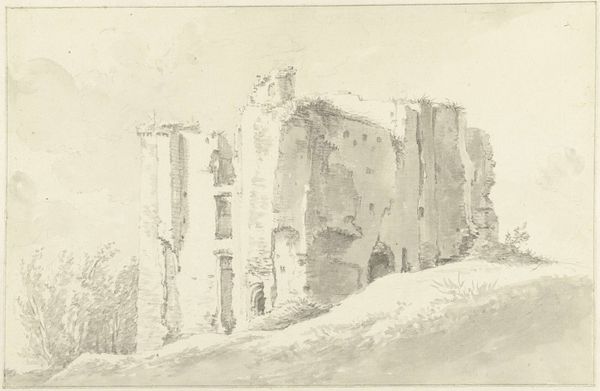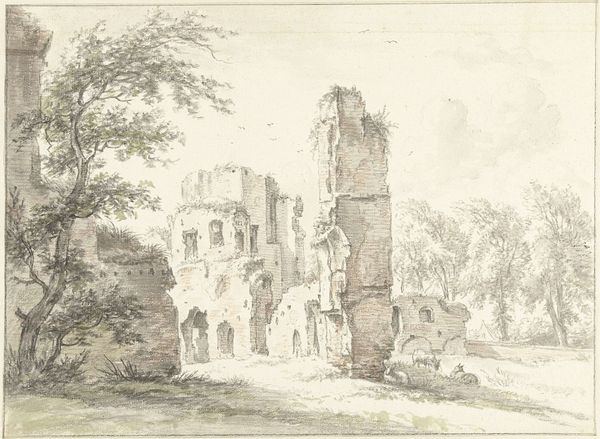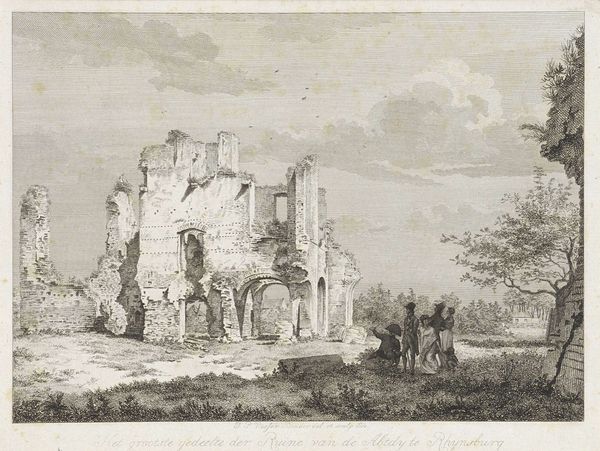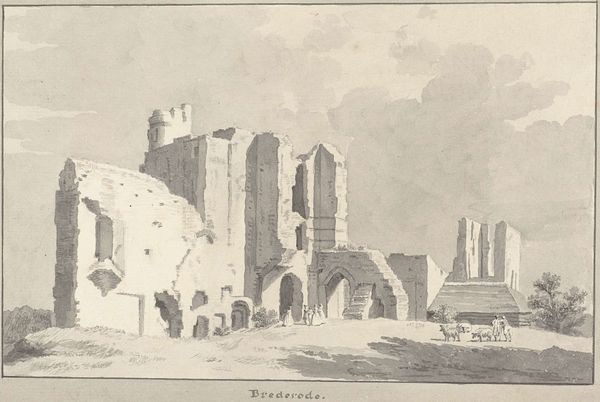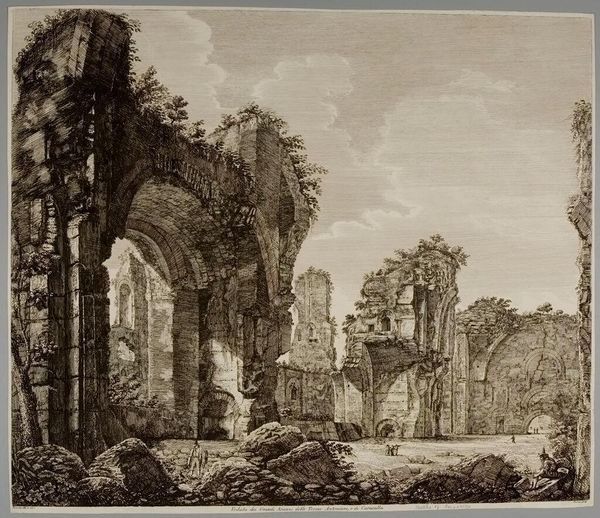
drawing, ink, pen
#
drawing
#
pen sketch
#
landscape
#
ink
#
romanticism
#
pen-ink sketch
#
pen
#
history-painting
Dimensions: height 242 mm, width 328 mm
Copyright: Rijks Museum: Open Domain
Editor: This is Hermanus van Brussel’s “Overblijfselen van de abdij te Rijnsburg,” made in 1802, using pen and ink. There's such a somber mood to it. These crumbling ruins dominate the composition, really emphasizing decay. What do you see in this piece? Curator: I see a powerful commentary on the shifting sands of power and the impermanence of institutions. Van Brussel created this drawing during a time of immense social upheaval, witnessing the decline of religious authority in the Netherlands amidst growing revolutionary fervor throughout Europe. Doesn't it prompt questions about what was being dismantled? Editor: Definitely, I was just focusing on the visual representation of decay. But knowing it's from that era makes it more resonant. Were these kinds of ruin depictions common back then? Curator: Absolutely. Ruins became a popular motif during the Romantic era, representing a yearning for a past perceived as more authentic and virtuous, and functioned as a stark warning against hubris and earthly ambition. They invited reflection on how structures of power and belief can be challenged and ultimately erode, particularly given what had just happened in France with the Revolution. Notice the people in the right corner - mere observers? Or symbolic harbingers of societal change? Editor: I hadn't considered them in that light! More like casual viewers of the ruin. Thinking of them as active participants—or indicators—changes my perspective entirely. Curator: It also complicates the simple understanding of the ‘picturesque ruin.’ It shows a societal moment teetering on change. And these visual relics were ripe material. This offers more than aesthetic appeal, suggesting deeper political questions through the artistic lens. Editor: This really broadened my view. Seeing art as more than just images, but as evidence of social and political issues – I get it now. Curator: Exactly, art isn't just about beauty; it's about understanding ourselves, our history, and the structures that shape our world. And questioning everything!
Comments
No comments
Be the first to comment and join the conversation on the ultimate creative platform.

